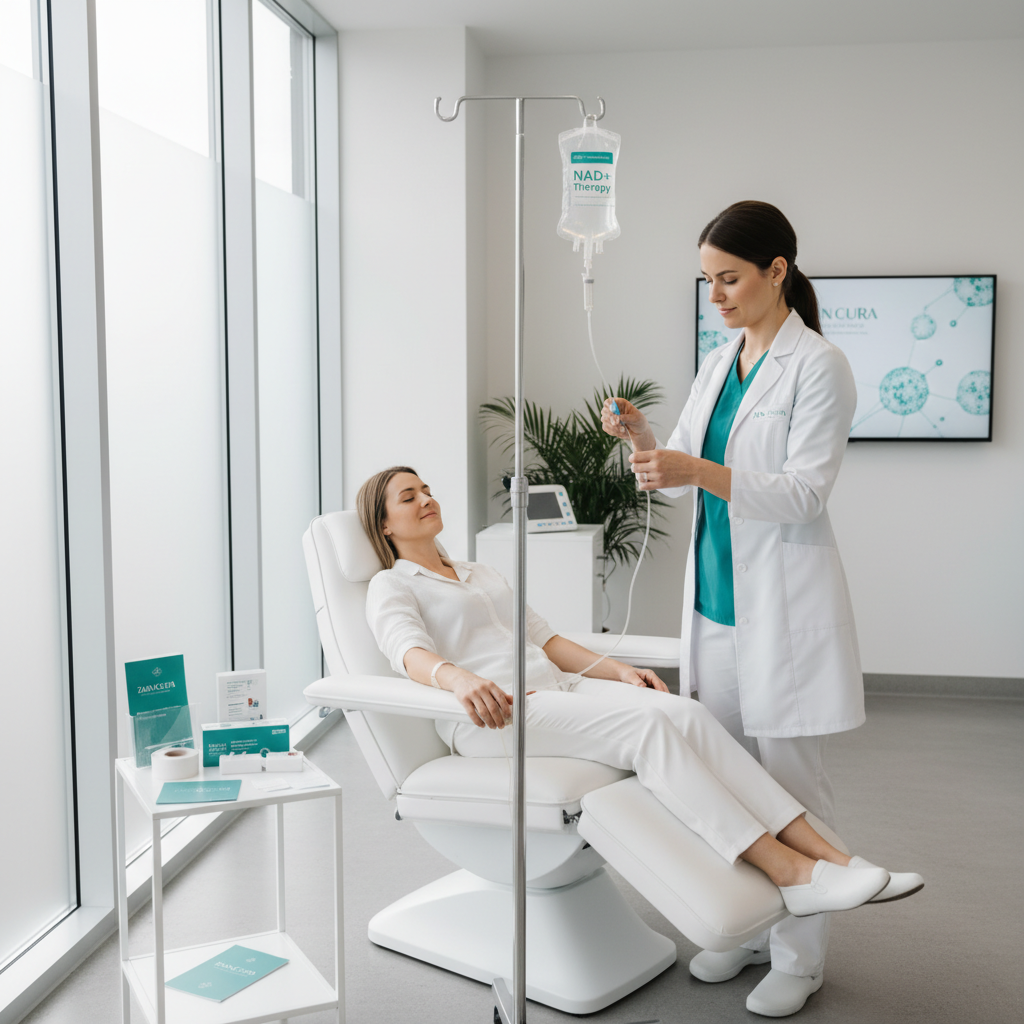
The Truth About NAD+ Drips — Anti-Aging or Just a Trend?
In recent years, NAD+ drips have gained significant popularity, especially in cosmopolitan cities like Dubai, known for its focus on wellness and anti-aging treatments. NAD+ (nicotinamide adenine dinucleotide) is a coenzyme found in all living cells, playing a vital role in energy metabolism and cellular repair. But with the buzz around NAD+ drips as a potential anti-aging miracle, residents in Dubai may wonder: Are these treatments truly effective, or are they just another wellness fad?
In this article, we will explore some of the most common questions about NAD+ therapy, aiming to provide a clear and balanced understanding, including its potential impact on longevity.
Does NAD really reverse aging?
NAD+ is essential for various biological processes, including DNA repair, cellular energy production, and regulating circadian rhythms, all factors that influence the aging process. As we age, NAD+ levels in the body decrease, which can contribute to metabolic and neurological decline.
Some research suggests that restoring NAD+ levels might improve cellular function and reduce signs of aging at a molecular level, potentially promoting longevity by supporting healthy cellular metabolism and stress resistance (Imai & Guarente, 2014). However, it's important to note that while NAD+ supplementation can support overall cellular health, there is currently no conclusive scientific evidence proving that NAD+ can reverse aging itself. Aging is a complex, multifactorial process, and no single treatment can halt or reverse it completely.
Do NAD IV drips actually work?
NAD IV drips involve delivering purified NAD+ directly into the bloodstream, aiming to boost NAD+ availability rapidly. This method bypasses the digestive system, potentially leading to higher bioavailability compared to oral supplements.
Patients and wellness enthusiasts report benefits such as increased energy, improved mental clarity, and enhanced athletic performance following NAD IV therapy. However, clinical studies on NAD IV drips are limited, and more rigorous research is needed to fully validate these claims (Elhassan et al., 2019).
Factors like dosage, frequency, and individual health conditions can also influence the effectiveness of NAD IV treatments.
What is the controversy with NAD+?
The controversy surrounding NAD+ primarily stems from the gap between marketing claims and scientific evidence. While NAD+ is fundamental to cellular health, the promotion of NAD+ drips as a cure-all for aging, chronic diseases, or addiction sometimes lacks sufficient clinical backing.
Additionally, NAD+ therapies can be expensive and are not universally covered by health insurance, leading some to question the cost-effectiveness. There are also concerns about the standardization and regulation of NAD+ products and IV treatments, which vary between clinics.
It's crucial for patients to seek treatments from licensed healthcare providers with transparent practices.
Do NAD patches actually work?
NAD patches are a popular alternative to IV drips, offering a non-invasive means of NAD+ supplementation through transdermal absorption. These patches contain NAD+ or its precursors and aim to slowly release them into the bloodstream.
While convenient, scientific evidence about their effectiveness is limited. The skin's barrier properties can restrict the amount of NAD+ absorbed, potentially making patches less efficient than IV therapy or oral supplements. User experiences vary, and more research is needed to establish optimal formulations and dosages.
NAD+ and Longevity: What Does the Science Say?
Emerging studies in the field of longevity research suggest that maintaining optimal NAD+ levels may support key pathways involved in lifespan extension, such as activating sirtuins—proteins linked to prolonged cellular health—and enhancing mitochondrial function (Covarrubias et al., 2021). While these findings are promising, translating them from animal models to humans requires further investigation.
Therefore, NAD+ therapies might contribute to healthy aging and increased healthspan, but they should not be viewed as guarantees for extended lifespan or immortality.
When to Visit a Doctor at Zaincura
If you are considering NAD+ therapy for anti-aging, longevity, or other health benefits, it's always best to consult a healthcare professional for a diagnosis and personalized advice. Our doctors at Zaincura, located in Dubai, provide comprehensive assessments to determine whether NAD+ treatments or other therapies suit your unique health needs.
Persistent fatigue, cognitive decline, or other symptoms related to aging should be evaluated by a medical expert to rule out underlying conditions.
Book an appointment with Zaincura today to speak with our specialists and explore safe, evidence-based options tailored to your wellness goals.
Conclusion
NAD+ drips have generated excitement in the anti-aging and longevity community, especially in wellness hubs like Dubai. While NAD+ plays an important role in cellular function and aging, the current scientific landscape suggests that rather than a magic cure, NAD+ therapy is a promising area requiring further research.
Non-invasive options like NAD patches offer convenience but lack robust evidence of effectiveness. As with any medical treatment, it is essential to approach NAD+ therapies with informed caution and professional guidance.
Our team at Zaincura is committed to providing trustworthy, personalized healthcare to help you make well-informed decisions about anti-aging, longevity, and wellness treatments. Always consult a healthcare professional before starting any new therapy.
References:
- Imai, S., & Guarente, L. (2014). NAD+ and sirtuins in aging and disease. Trends in Cell Biology, 24(8), 464-471.
- Elhassan, Y. S., et al. (2019). NAD+ metabolism: pathophysiologic mechanisms and therapeutic potential. Nature Reviews Endocrinology, 15(11), 665-676.
- Covarrubias, A. J., Perrone, R., Grozio, A., & Verdin, E. (2021). NAD+ metabolism and its roles in cellular processes during ageing. Nature Reviews Molecular Cell Biology, 22(2), 119-141.